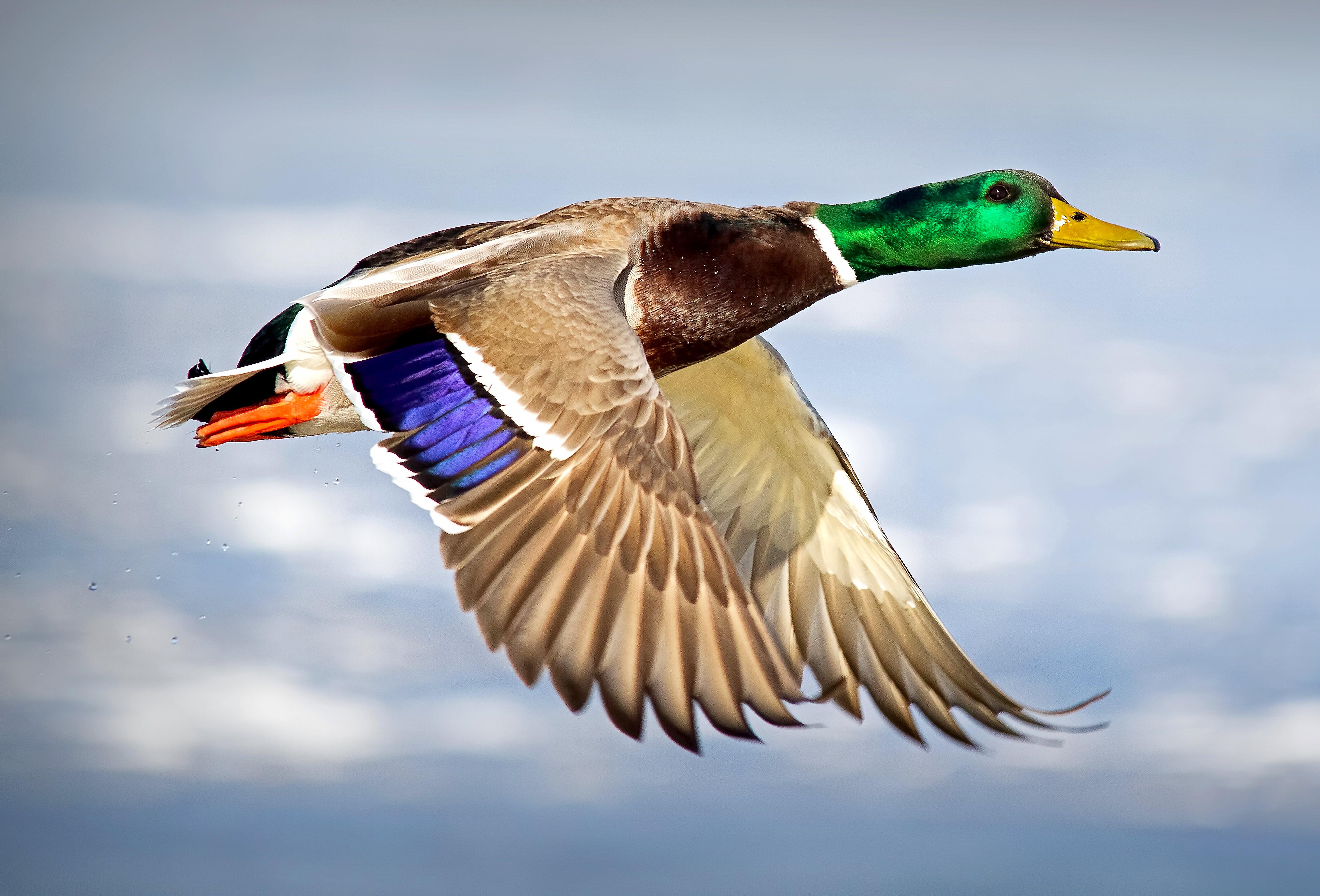Crazy tailwind pushes greenhead north and sets a new record for the fastest duck flight speed ever recorded

Hunters might not consider mallards fast fliers, but one greenhead recently hit flight speeds almost comparable to that of a small plane. Photo by Jeffrey Weymier
When conditions allow, ducks don’t waste time migrating north to their breeding grounds. This spring, one drake mallard took that to the extreme, setting a flying speed record of 103 mph.
The duck was clocked April 6 via GPS monitoring conducted by the Cohen Wildlife Ecology Lab, and the top speed actually broke another lab record set the same day. The lab announced the initial record with an April 15 Instagram post.
“We have a new flight speed record for our projects: This duck was flying almost 100 mph (with a strong tailwind),” the post said. “Most of our birds have made it to the prairies, but this drake mallard is leading the pack. He started his spring migration on March 14 but took a three-week break just outside of St. Louis while the weather warmed up. He took off again on April 6 and covered 1,000 miles in 29 hours while also taking an eight-hour break in southern Minnesota. East-southeast winds gusting more than 50 mph on the evening of April 6 pushed him 600 miles from southern Minnesota across the Canadian border in just eight hours. With this crazy tailwind, his top speed recorded on GPS was 99.3 mph.”
On May 20, another Instagram post announced the new top speed. Both ducks apparently benefitted from the same weather front.
“And just like that, our speed record is broken again,” the post said. “This drake mallard caught the same strong tailwind that we talked about in our April 15 post, but this bird topped out at 103 mph. He started his spring migration on February 2, which is pretty early for our mallards (our average migration initiation date is usually around mid-March). He took his time moving north, frequently stopping at wetlands throughout Illinois, Missouri, and Iowa until he caught that big tailwind. He has finally settled down in a network of wetlands in western Manitoba, where he is hopefully keeping an eye on his nesting hen.”
Don’t Miss: Is Duck Hunting Really in Decline?

This social media graphic shows the mallard’s migration path, including the portion during which it rode a strong tailwind at high speeds. Image courtesy of Cohen Wildlife Ecology Lab
The fastest duck previously recorded was a red-breasted merganser that hit a top airspeed of about 100 mph while reportedly being pursued by an airplane. That broke the previous mark held by a canvasback clocked flying at 72 mph. For comparison, most small propeller-driven airplanes have a cruising speed of about 100 to 200 knots (115 to 230 mph).
The posts prompted many tongue-in-cheek comments, including one from duckman_bruce: “103 mph! I’m using that excuse the next time I miss.”
Headed by Bradley S. Cohen, assistant professor of wildlife ecology and management at Tennessee Technological University, the Cohen Wildlife Ecology Lab conducts applied research in ethology and conservation, producing objective findings that inform wildlife management issues and lead to more effective policy decisions. Its current waterfowl studies involve mallard habitat selection during the nonbreeding season, waterfowl response to disturbance on sanctuaries, the landscape ecology of mallards during their annual cycle, and forage availability for wintering waterfowl.
Don’t Miss: Waterfowl Migrations are Changing. Here’s What That Means for Hunters












